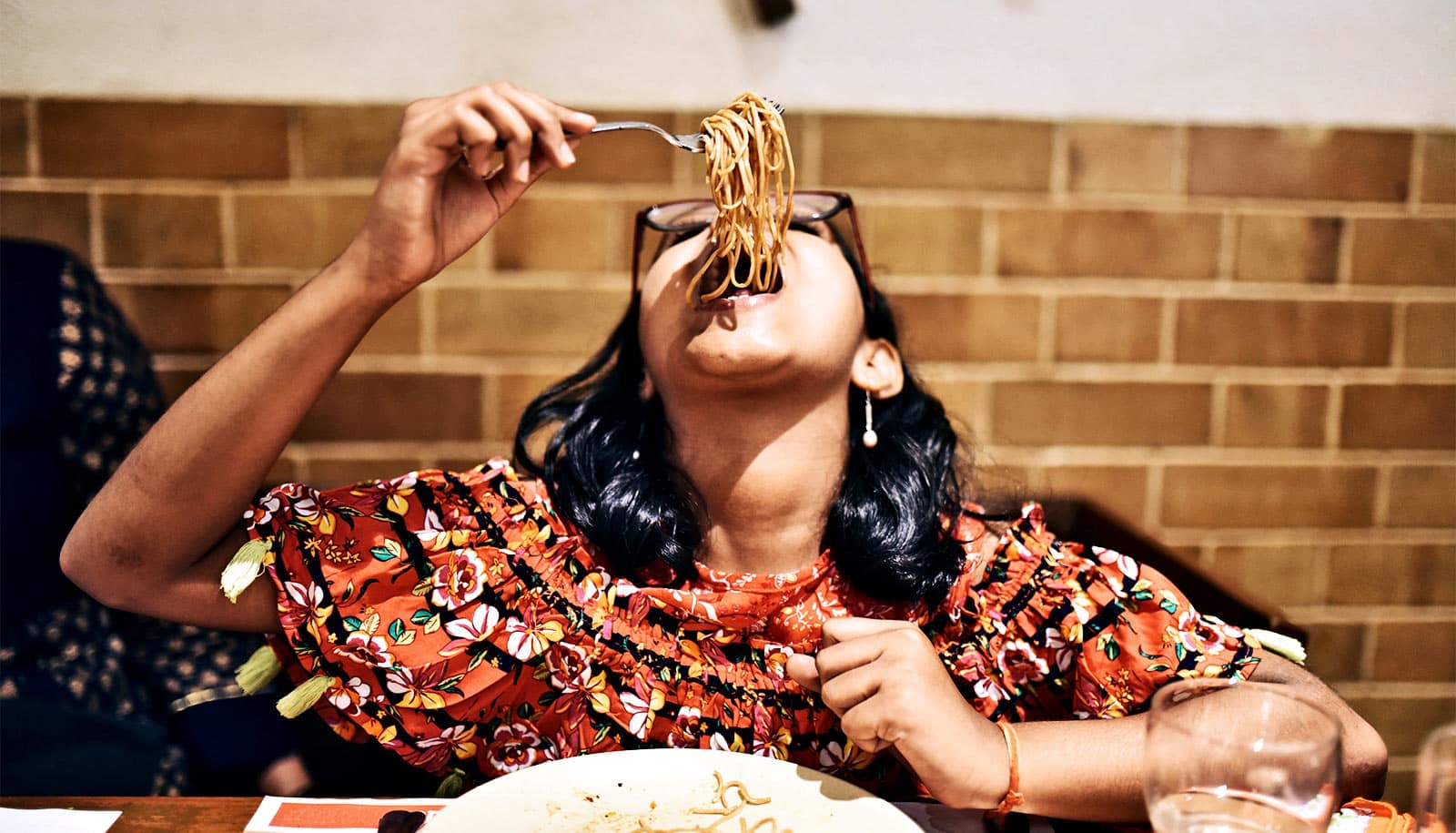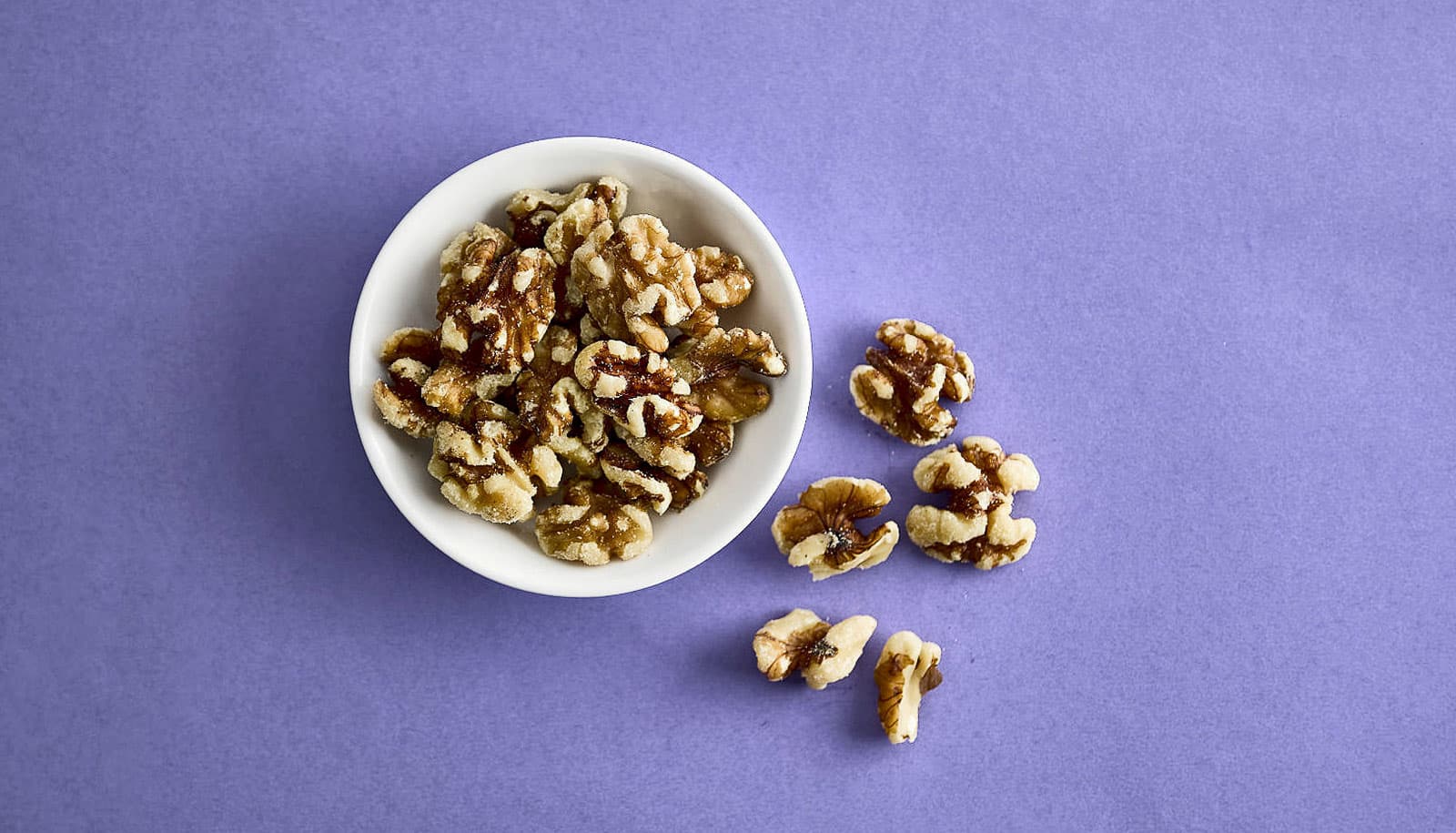History, industry, the quest for social status, and our changing ideas about health all inform what we eat and why, according a new book.
The book, Food Fights: How History Matters to Contemporary Food Debates (UNC Press, 2019), looks at a wide range of issues that relate to our dining habits—and highlight just how complex (and interesting) the world of food can be.
Here, co-editors Chad Ludington and Matthew Booker, both associate professors in the history department at North Carolina State University, explain some of the arguments in the book, including the constantly-changing definition of “healthy” food, how our tastes may be a product of our status, and more:
Food Fights is described as a book that looks at food, and food-related debates, through a “historical lens.” What does that mean?
Chad Ludington: What we mean by “historical lens” is that we focus on how a current food “problem,” in other words something which is hotly contested, came to be in the first place.
When we as a society argue about things like genetic modification or the influence of big agriculture, or the Farm Bill, for example, we often imagine that one side, either pro or con, is clearly harmful without acknowledging that there are deep historical reasons why the argument exists in the first place. That historical understanding allows us to see that today’s problems very often grew out of yesterday’s solutions—and whatever solutions we find in the future will, in turn, create their own set of problems for future generations to deal with. That’s not a call for inaction; nor is it a call for eliminating the status quo. Instead, it is a call for a degree of humility on all sides.
Food is something that everyone can relate to—everyone eats, even if they don’t cook. What drew you to using food as a way of looking at history, and vice versa?
Ludington: Well, one of us is a cultural historian and the other is an environmental historian, and both approaches to history encourage eclectic thinking. In other words, we’re both willing to look for evidence from a variety of sources and to use the insights of other disciplines. Sort of like fusion cooking.
So, we concluded that food and drink offer an incredible window onto the past, because what we eat and how we eat it depends upon culture (including religion and gender), politics, social class, geography, geology, biology, and chemistry. Turning the causal arrow around, if you study the history of food and foodways—how and what people eat—you begin to see how all of the fields I just mentioned are deeply interconnected. Food is quotidian, we eat it every day, or at least we are fortunate if we do. But this quotidian thing is actually complex and fascinating, and as you said, something that everyone can relate to.
Food and cooking have long been part of pop culture, but that seems to have increased significantly over the past 20 years, with the rise of everything from Top Chef and the Food Network, to “foodie” culture and countless online platforms devoted to cooking and the restaurant industry. Why do you think our relationship with food has changed, moving from sustenance to entertainment? How does Food Fights address this?
Ludington: That is a hot question among academics who study food culture for a living and, as academics, we’ll give you the supremely unsatisfying answer: it’s complicated. There are no doubt many factors that have created our current “foodie” moment. But it’s important to note that this is not the first time our society has been obsessed with food.
“Food is sensual, and sensuality sells.”
That’s because when we talk and argue about food—and we don’t mean who makes the best oyster po’boy in New Orleans, but large societal debates about food—we’re really arguing about what constitutes proper behavior, both on the individual and societal level. So, arguing about food is really always arguing about something else.
But to return to your question, part of our current food obsession may be a pendulum swing from our 20th century obsession with canned, boxed, and lab-made food. We got tired of modernity and had a nostalgic longing for something allegedly, and sometimes genuinely, more natural. Tang, anyone? No, I suspect most people these days would prefer fresh-squeezed orange juice.
So, one possible answer to your question is that the interest in food comes and goes. Likewise, we can’t forget that Julia Child’s TV show was once all the rage among educated Americans, but our current interest in food on television seems greater than ever before, and not just because we have so many more TV channels from which to choose. But if you’ve noticed, most food shows are voyeuristic, not exactly sexually, but indirectly so. Food is sensual, and sensuality sells. Moreover, most of the food shows deal with fancy and expensive ingredients, and this is where Margot Finn’s chapter interrogates the rise of the current “foodie” movement.
Finn argues that our current interest in food is a result of increasing social inequality. As the truly rich move farther away from the rest of us, food is a way to assert one’s cultural and even moral status, while not requiring what economists would call a high entry cost.
Your trip to the farmer’s market or the chic farm-to-table restaurant may in fact cost slightly more than going to a regular grocery store or T.G.I. Friday’s. But for those who are somewhere in the vast middle between the 1% and the bottom economic quintile of society, the social credentials to be earned for making the extra effort are worth every penny, at least in many social circles. Is that cynical? Maybe. But we’re pretty convinced by the argument.
A number of the chapters in Food Fights deal with food as big business—from the multi-billion-dollar Farm Bill to “big agriculture.” Are there any insights into how the farm-to-fork food industry has evolved over time, and what that ultimately means for American tables?
Matthew Booker: Both growing food and eating have changed dramatically in the past 150 years. While some commodities like sugar and spices have long histories of international trade, it is only in the modern era that staples like grain and meat might come from anywhere. Specialization in agriculture, where, for example, California produces more than 80% of the entire world’s supply of almonds, has led to big drops in prices and allowed oranges and grapes, for instance, to appear on our tables every month of the year.
As Peter Coclanis notes in his chapter, the availability and price of fresh fruit and vegetables on US tables is far better than it was only two generations ago. But the consequences of specialization are in some ways pernicious and thus hotly debated, as Steve Striffler, Sarah Ludington, and Margaret Mellon’s chapters show.
From a general sense of unease at the seeming fragility of a global food system, to the serious concerns about often invisible, underpaid, and insecure farm workers who produce our food, to the increasing role of multinational biotech corporations, to the skewed impact of the US Farm Bill on American production, many Americans are uncomfortable with the industrial food system. Are they uncomfortable with its cheap food and cheaper wages, its hidden environmental costs, its increasing reliance on large-scale agriculture, or the contrast with hazy, nostalgic views of an agrarian past and home-cooked meals that may never have existed? We think our authors provoke and educate all sides in these debates.
There appears to be never-ending discussion over what constitutes “good” food, from debates over genetically engineered foods to ever-changing guidelines about how to define a nutritionally balanced meal. I know the book addresses both of these issues, and more. It’s difficult to capture entire chapters in an interview, but what are some of the key ideas the book brings to light about how we think of a healthy meal?
Booker: Food Fights shows that a healthy meal is an ever-changing target. As Charlotte Biltekoff’s essay shows in an American context, the very concept of a healthy meal is a historical invention, and each generation has redefined it, while treating the past with a mix of nostalgia and condescension. As mentioned above, food is one of the things our society uses to argue about proper behavior, from motherhood, as Amy Bentley discusses, to environmental credentials, as Finn argues, to the role of government, as my essay shows.
The authors in Food Fights do reach consensus on two things, though. First, food means family and community. A healthy meal requires more than just sufficient vitamins or nutrients. As Bob Valgenti argues in his tour of food and Western philosophy, eating is a key part of how we give meaning to our lives, and that’s a good thing. And yet family and community meals can be over-idealized.
Second, we agree that food should not be a club we use to beat one another with. Demanding that others behave as we wish has never been a recipe for healthy eating. We must respect the varieties of eating, and the limits on what people can do in their limited time and with limited incomes. Society’s challenge is to ensure that everyone has access to good food at a reasonable price, not to dictate what people eat.
The popularity of different foods rises and falls over time. Pizza, tacos and pad thai are all fairly commonplace now, but were once viewed as exotic. What factors influence our tastes as a public?
Booker: This is a central question in the book and our answers varied.
Several authors in Food Fights considered the remarkable shifts in taste. Finn asked if taste can ever be separated from the economic and social status of individuals. So, for example, eating allegedly exotic food is, at least when it first arrives in America, an assertion of worldliness and cultural capital, if not also financial capital. What she’s ultimately asking us to consider is if taste is really a choice at all.
Chad argues in his essay that social class is hugely important in determining taste, but so too are various forms of “tribal” identity, the gendered meanings of food, and the desire to be perceived as authentic, however that is defined.
I argue that the near-disappearance of oysters from the American diet in the 20th century was due in part to fear of disease, even after that fear was no longer rational. But it’s certainly interesting to note that oysters were once a food for all classes, but especially for laborers.
Given the scope of the book, and the variety of topics it covers, are there particular anecdotes or arguments that really stood out to you—either because they changed the way you thought about food, or because you simply found them fascinating?
Booker: As editors, we loved how our authors matched wits with one another. Coclanis’ wholehearted defense of industrial food really opens our eyes about the larger forces that determine what is on our plate and keep most food remarkably affordable compared to previous generations. Margaret Mellon’s look back on a life in agricultural biotechnology raises serious questions about the sustainability of industrial farming given the increasing monopoly control of a few biotech firms. Ken Albala and Rachel Laudan each offered passionate perspectives from opposite positions, with Albala calling for cooks and eaters to slow down and enjoy their food, and Laudan noting the injustice of past food preparation and the freedom delivered by fast, modern food.
Those careful, reasoned arguments demonstrate two core values of this book: That only in understanding the historical roots of our current food debates can we hope to resolve them, and second, that a fair fight over food must include the strongest possible voices.
Source: NC State



